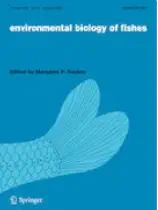Non-random reef use by fishes at two dominant zones in a tropical, algal-dominated coastal reef

Abstract
Habitat use and the processes which determine fish distribution were evaluated at the reef flat and reef crest zones of a tropical, algal-dominated reef. Our comparisons indicated significant differences in the majority of the evaluated environmental characteristics between zones. Also, significant differences in the abundances of twelve, from thirteen analyzed species, were observed within and between-sites. According to null models, non-random patterns of species co-occurrences were significant, suggesting that fish guilds in both zones were non-randomly structured. Unexpectedly, structural complexity negatively affected overall species richness, but had a major positive influence on highly site-attached species such as a damselfish. Depth and substrate composition, particularly macroalgae cover, were positive determinants for the fish assemblage structure in the studied reef, prevailing over factors such as structural complexity and live coral cover. Our results are conflicting with other studies carried out in coral-dominated reefs of the Caribbean and Pacific, therefore supporting the idea that the factors which may potentially influence reef fish composition are highly site-dependent and variable.